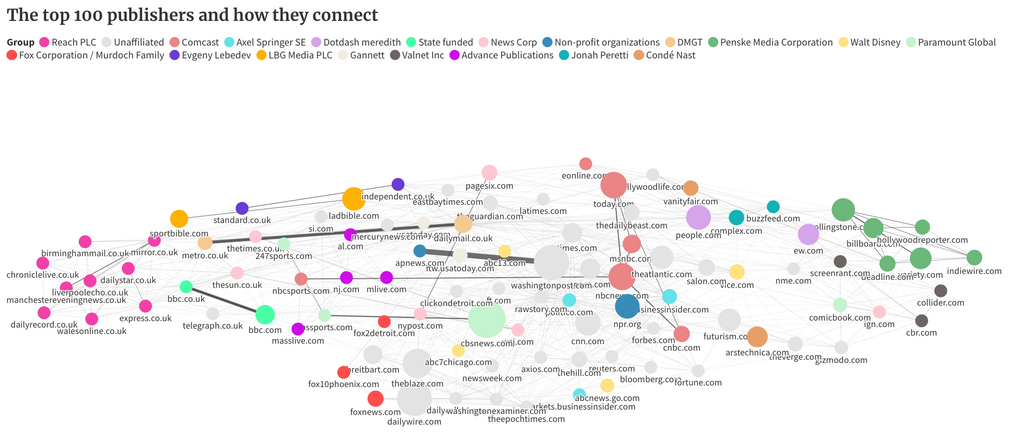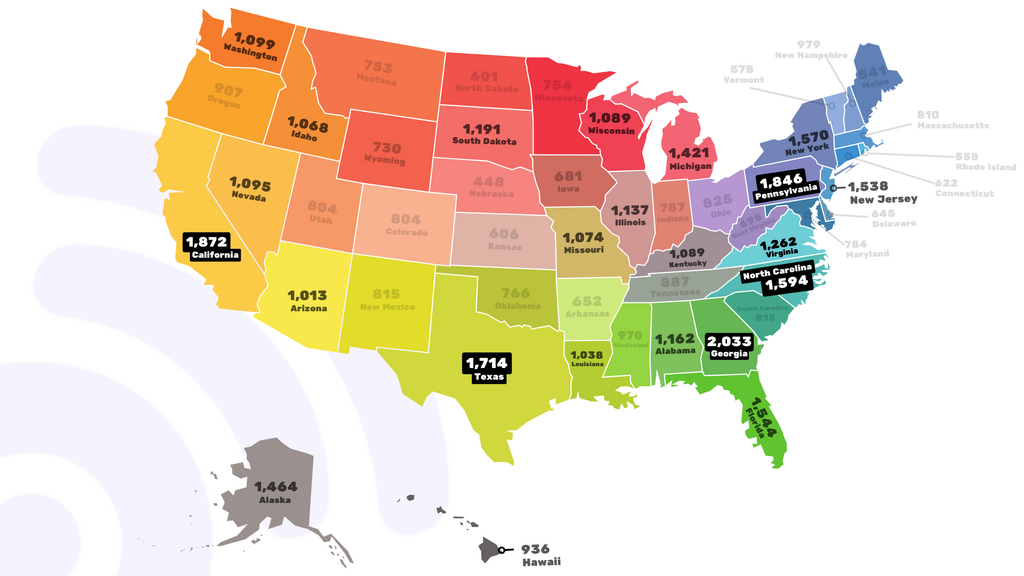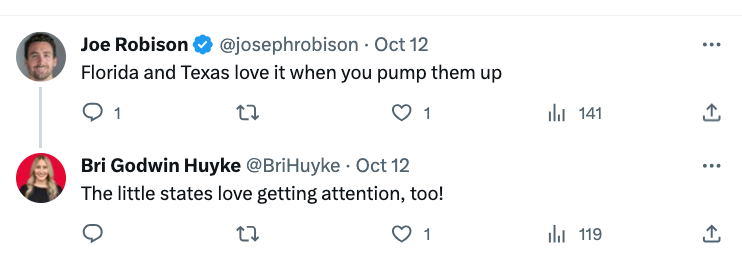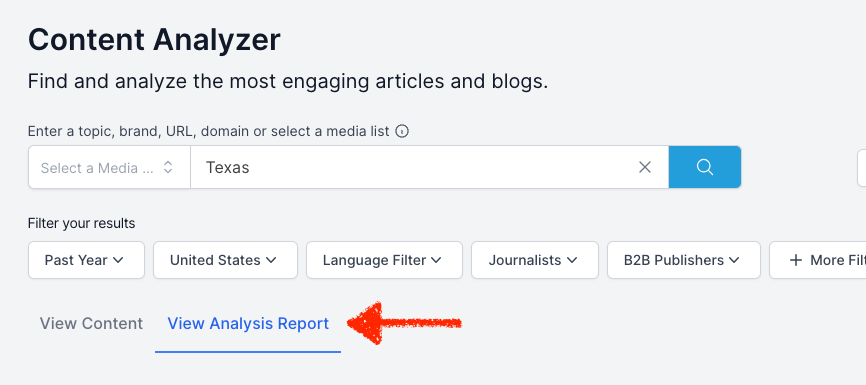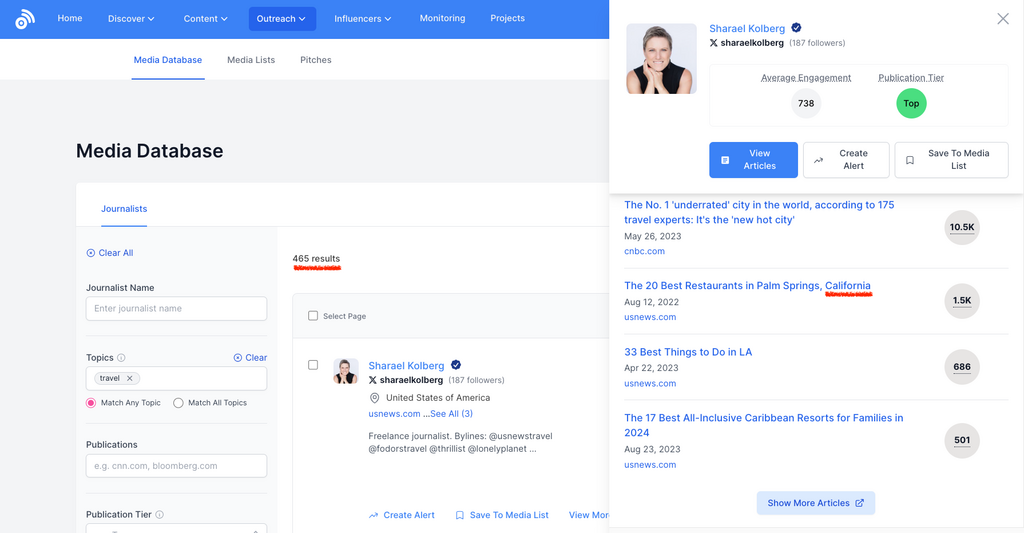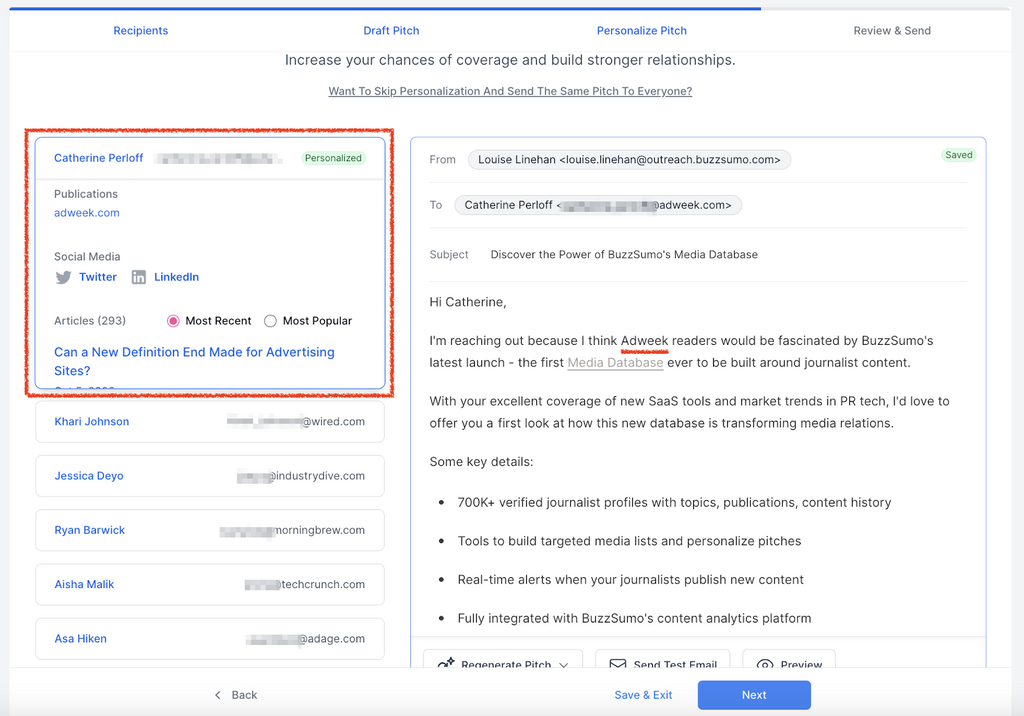Something I have noticed from digging into PR campaign headlines time and time again in BuzzSumo, is the serious engagement value of taking a localized angle to your PR.
Local PR headlines earn more links and syndication
Earlier this year, I did a mammoth study of syndicated content across 100 of the most engaging publications in US and UK media.
Out of curiosity, and on a bit of a tangent from the main bulk of the research, I decided to analyze which PR campaign headlines tended to pick up the most links.
I scoured through fantastic PR newsletters:
- The Grapevine by Iona Townsley at Heroine
- Unbottled from the Bottled Imagination team
- And The Weekly PR from Bethanie Durham at We Are North
This helped me find brilliant examples of PR campaigns, and their accompanying coverage.
Using online "ngram" analysis tools, I picked out some of the most commonly occuring phrases used in the headlines that have been, for want of a better phrase, "PR'ed".
I then analyzed these phrases in BuzzSumo's Content Analysis Report over the last year, filtering by the domains of the top 100 publications I mentioned earlier.
This was the result...
Location-specific headlines cropped up multiple times in the analysis (“By state”, “Cities with the biggest”, “Top states”, “By country” etc.) earning an between nine and 17 links apiece, on average.
Across all PR headline phrases, the amount of links averaged at seven, meaning localized PR headlines were a lot more valuable and a lot more likely to be syndicated.
Another thing I noticed across many location based PR headline phrases was the element of comparison.
Comparing different locations gives PR content a "Glocalized" feel. Readers across the city, country, or globe want to see where their location sits in the rankings.
Interestingly, in their recent research on 450+ PR pitch subject lines, Digital Third Coast found that including comparisons or rankings in your email subject can result in far more journalist clicks.
Digital PR Outreach Manager, Jen LeMair, writes:
Jen LeMair
"We found rankings can be a great way to pique the reader’s interest and get them to open your email. This format proved to consistently provide the highest average open rates.
This element of intrigue entices journalists to open the email to discover which product or trend secured the top spot and what sets it apart from the rest.
Leveraging rankings in your subject lines can be an effective method to convey relevance to journalists. Whether you’re ranking trends, states/cities, or sports teams, this type of format can be versatile."
Clearly, ranking locations is the way to go – both in your campaigns and their subject lines.
Amanda Milligan, now Director of Content Strategy at iPullRank, also discovered the power of localized press in her Stacker study of syndicated PR: "What publishers want".
Nicole DeLeon, PR expert and Founder of North Star Inbound, describes the idea of "Scaled localization" – ie. creating a PR campaign that touches on numerous locations, so you can pitch to multiple regional publications, and scale your coverage.
She goes into some really great detail in this LinkedIn post...
What about localized PR engagement?
After this analysis, I was curious again. I'd looked at links, but what about engagement?
I did some research last month but I didn't get around to sharing... until now.
If I identified four themes in PR headlines, and totted up their links and engagement from a top-level perspective – which group would win out?
I conducted this analysis on a five year basis, so average link results are slightly different to the syndication research you saw above.
Bear in mind, this is still an analysis of headlines across the top 100 most engaging US & UK media outlets.
I broke the headlines down into the following categories:
Data & Research – eg.
- report
- survey
- data
- stats OR statistics
Hyperbole – eg.
- the most
- highest
- top
- best
Location ranking – eg.
- top countries (also analyzed: states, areas, streets, towns, regions, districts etc.)
- top country
- best countries
- by country
- worst countries
Visual & creative – eg.
- visualized
- map
- recreated
- get paid to
And, yet again, localized PR headlines were bringing home the bacon...
From the analysis, I found a couple of things interesting straight away.
While there is crossover in hyperbolic and location based headlines (ie. localized PR campaign phrases not only lend themselves to comparison, but are also commonly hyperbolic eg. "the best", "the worst"), there is far less average engagement for general hyperbolic phrases in PR campaigns.
In other words, the localization angle is the thing that is really driving that engagement.
Another thing I noticed from the breakdown of the location category, was that "country" and "state" based headlines enjoy the highest average engagement and links.
As an aside, each location category in the table above represents a variation of the below query, which I analyzed in BuzzSumo's Content Analysis Report:
- top countries OR top country OR best countries OR best country OR by country OR worst country OR worst countries
In each search I'd replace the location type, since I wanted to find out which one had the best PR/coverage potential.
PRs are increasingly discussing the value of localization
I've started to see more and more PRs speak about the value of localizing press campaigns.
Earlier this year, Domenica D'Ottavio (Associate Director of Digital PR) and Beth Nunnington (VP Organic Media) from Journey Further joined our webinar and gave an amazing talk about why there's so much value in "Thinking globally, but acting locally"
I really recommend watching it – and not just because it's BuzzSumo content (scouts honor!) – but because there were so many actionable takeaways in there.
There was also that great post earlier from Nicole DeLeon (North Star Inbound).
Luke Cope, Co-Founder of Bottled Imagination, shared the below post (using BuzzSumo data), showing the value of localized headlines...
And then this week Bri Godwin Huyke, Digital PR Manager at Journey Further, shared the following on the value she's been seeing with "State-level breakdowns" in her PR strategy.
I knew, from our syndication report, and the subsequent PR headline research I'd been sitting on, that "State" related headlines were big engagement and link/syndication drivers.
So when I saw Bri's post, it gave me an idea.
Wouldn't it be great for PRs to know exactly which states were the ones driving strong engagement?
This led me to create a map of states across North America, and the average engagement they tend to generate in headlines...
So, which US states should you PR?
From our analysis, we found the top 10 US states driving headline engagement were:
- Georgia
- California
- Pennsylvania
- Texas
- North Carolina
- New York
- Florida
- New Jersey
- Michigan
- Virginia
This one press example from TripAdvisor "This Georgia beach has been named one of the Top 25 in the world" shows the value in honing in on the state Georgia.
To date it has driven a cool 9.9K engagements.
This next piece by Forbes isn't an example of digital PR from an external brand or agency, but rather a piece of hero content by the Forbes editorial team that proves the value of localized stories.
Using publically available data, they analyzed the best places to live in California. As a result, they have landed 3.5K engagements and 141 links...
On Bri Godwin Huyk's X post I referenced earlier, I noticed some discussion in the comments from Bri herself, and Joe Robison, Founder of Green Flag Digital.
Joe had called out Texas (#4 in our research) and Florida (#7 in our research) as states that enjoy good PR coverage.
It might be worth keeping these in your back pocket!
I analyzed the above data across US headlines only.
If I had more time, I'd also have done the following
- Restricted it only to the top 100 publications
- Restricted it to headlines from journalists (there are 700K journalists in BuzzSumo's Media Database)
- Analyzed more typical state-related PR headline phrases ie. “‘State’ is the most” or “‘State' is the top”
I'd do all of this in order to further eliminate non-PR stories (ie. political news etc.), and zero-in on replicable press.
It's not a perfect analysis, but it can definitely help PRs get a gist of where the engagement opportunities lie when coming up with their next PR campaign idea.
Try this research in BuzzSumo
If you want to replicate this research for yourself, head to the Content Analysis Report and enter your location based keyword, then choose your filters.
In this example, I've searched Texas headlines in the US, and applied a Journalist filter.
Then hit "View Analysis Report"
And start comparing engagement and links data by adding in comparisons...
After you've decided on the location that you want to target and created your campaign, head to BuzzSumo's Media Database, and search for journalists that will be most likely to cover your story in those areas.
Just enter your topic, set your country, and choose your location...
This search returned 465 journalists who are either based in California, have published travel content about California – or both.
Found the ones right for your campaign? Drop them into a media list...
And then go ahead and send your pitch...
Found this interesting? Have a go at doing your own content and journalist research.
Grab a 30-day free trial here or check out our PR & Comms plan to access all of the tools you've seen in this blog.
Categories
Digital PRCategories
Digital PRThe Monthly Buzz⚡
Subscribe to BuzzSumo's monthly newsletter to:
Stay up-to-date with the best of the best in content marketing 📝
Get data-informed content, tips and tidbits insights first 👩🏻💻
Read top shared content by top marketing geeks 🤓
Try
Enter any topic, term or url to search to see BuzzSumo in action. It’s free!
100% free. No credit card required.
